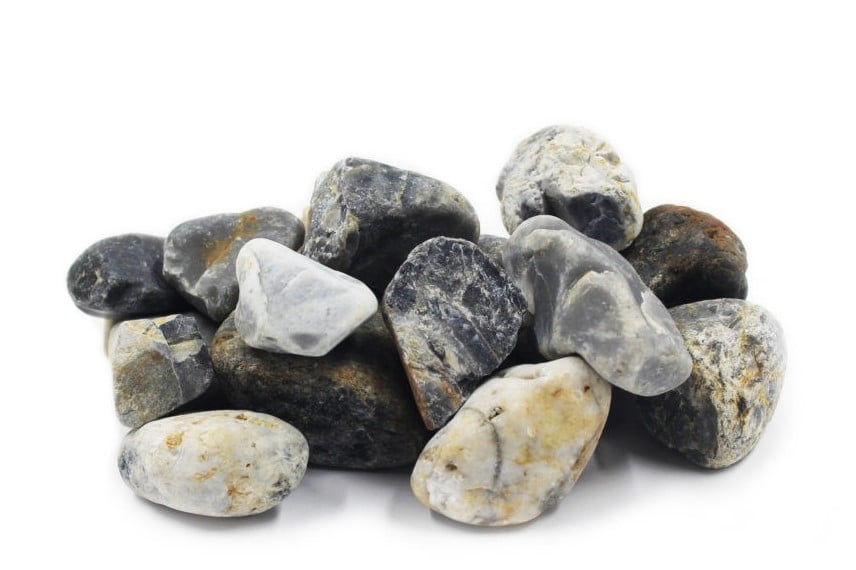
Landscaping plays a crucial role in creating inviting and visually appealing outdoor environments, whether it's a residential garden, commercial property, or public park. Among the myriad of landscaping materials available, decorative stone stands out as a versatile and aesthetically pleasing option. In this article, we explore the uses, benefits, and design possibilities of decorative stone for landscaping, highlighting its ability to transform outdoor spaces into stunning and functional areas.
Uses of Decorative Stone in Landscaping: Decorative stone offers a wide range of applications in landscaping, providing both practical and aesthetic benefits. Some common uses of decorative stone include:
-
Pathways and Walkways: Decorative stone can be used to create pathways and walkways throughout the landscape, offering a durable and low-maintenance alternative to traditional paving materials. Whether it's crushed gravel, pebbles, or flagstone, decorative stone adds texture and visual interest to outdoor pathways while facilitating easy navigation.
-
Garden Borders and Edging: Decorative stone can be used to define garden borders and edging, separating different areas of the landscape and adding structure to flower beds, shrubbery, and other planting areas. Stone edging provides a clean and polished look, while also helping to prevent soil erosion and contain mulch or gravel.
-
Retaining Walls: Decorative stone can be stacked or arranged to create retaining walls, which serve both functional and decorative purposes. Retaining walls help to stabilize slopes, prevent erosion, and create level terraces for planting or seating areas. Stone retaining walls add character and visual appeal to the landscape, enhancing its overall aesthetic.
-
Water Features: Decorative stone can be used to create stunning water features such as ponds, waterfalls, and fountains. Whether it's natural stone boulders, river rocks, or pebbles, decorative stone adds texture, color, and visual interest to water features, creating a focal point and enhancing the ambiance of outdoor spaces.
-
Ground Cover: Decorative stone can be used as a ground cover to suppress weeds, retain moisture, and add visual interest to bare areas of the landscape. Whether it's gravel, crushed stone, or decorative aggregates, stone ground cover provides a low-maintenance and long-lasting solution for enhancing the appearance of outdoor spaces.
Benefits of Decorative Stone in Landscaping: In addition to its aesthetic appeal, decorative stone offers several practical benefits for landscaping projects:
-
Durability: Decorative stone is highly durable and resistant to weathering, making it suitable for outdoor applications where it may be exposed to the elements. Stone landscaping materials are long-lasting and require minimal maintenance, saving time and effort in the long run.
-
Versatility: Decorative stone comes in a wide variety of colors, shapes, and sizes, allowing for endless design possibilities. Whether you prefer the rustic charm of natural stone or the sleek elegance of polished pebbles, there is a decorative stone option to suit every style and preference.
-
Sustainability: Decorative stone is a sustainable landscaping material that is sourced from natural stone quarries or recycled from construction and demolition waste. Using decorative stone in landscaping helps to reduce the environmental impact associated with traditional landscaping materials and promotes sustainability in outdoor design.
-
Weed Suppression: Stone ground cover helps to suppress weeds and minimize the need for herbicides, providing a natural and eco-friendly alternative to chemical weed control methods. By creating a barrier that blocks sunlight and prevents weed growth, decorative stone helps to maintain a clean and tidy landscape with minimal effort.
-
Drainage: Decorative stone improves soil drainage and prevents waterlogging, particularly in areas prone to heavy rainfall or poor drainage. Stone pathways, gravel beds, and drainage trenches allow water to infiltrate the soil more efficiently, reducing the risk of erosion, flooding, and water damage.
Design Tips for Using Decorative Stone in Landscaping: When incorporating decorative stone into landscaping projects, consider the following design tips to achieve the desired aesthetic and functional outcomes:
-
Choose complementary colors and textures that harmonize with the surrounding environment and existing landscaping features.
-
Use different sizes and shapes of decorative stone to create contrast and visual interest. Mix and match materials such as gravel, river rocks, and boulders to add depth and dimension to the landscape.
-
Consider the scale and proportion of decorative stone elements in relation to the overall size and layout of the landscape. Avoid overcrowding or overwhelming the space with too much stone, and ensure that pathways and walkways are wide enough to accommodate foot traffic.
-
Incorporate lighting to highlight key features and create ambiance in the landscape. Use spotlights, uplights, or string lights to illuminate water features, pathways, and focal points, enhancing their visibility and appeal after dark.
-
Regular maintenance is key to keeping decorative stone elements looking their best. Sweep pathways, remove debris, and periodically replenish gravel or mulch to maintain a clean and well-groomed appearance.
In conclusion, decorative stone is a versatile and visually striking landscaping material that adds beauty, functionality, and durability to outdoor spaces. Whether used for pathways, garden borders, water features, or ground cover, decorative stone offers numerous design possibilities and practical benefits for enhancing the landscape. By incorporating decorative stone into landscaping projects, homeowners, landscapers, and designers can create stunning outdoor environments that are both aesthetically pleasing and environmentally sustainable.

No comments yet